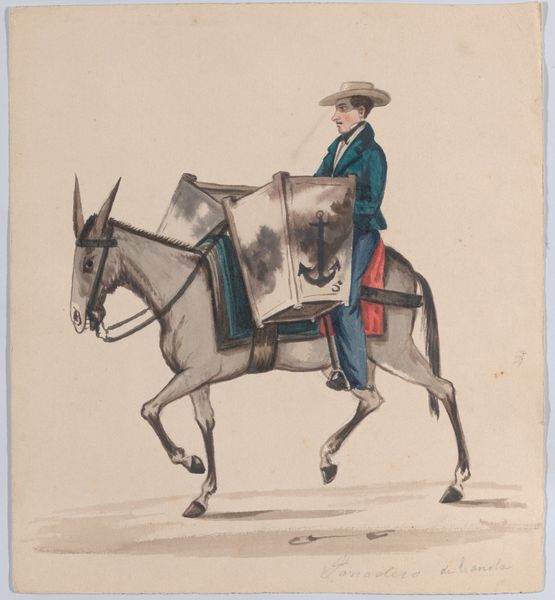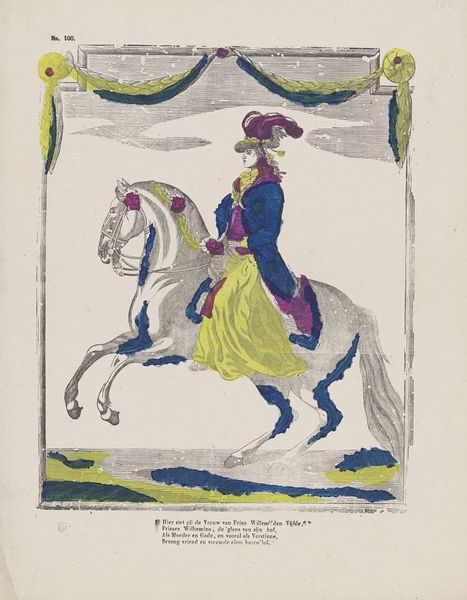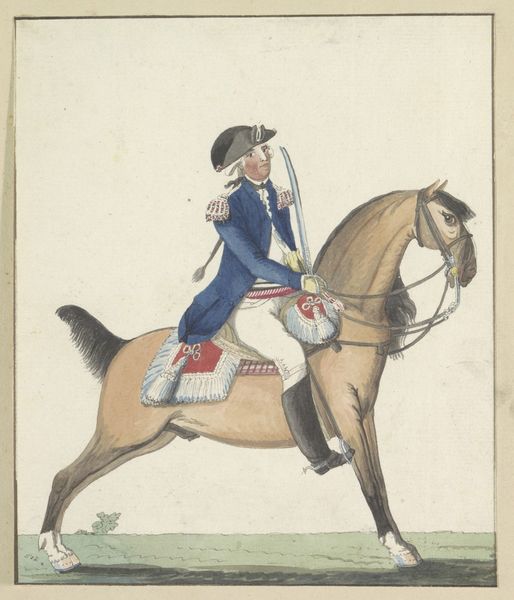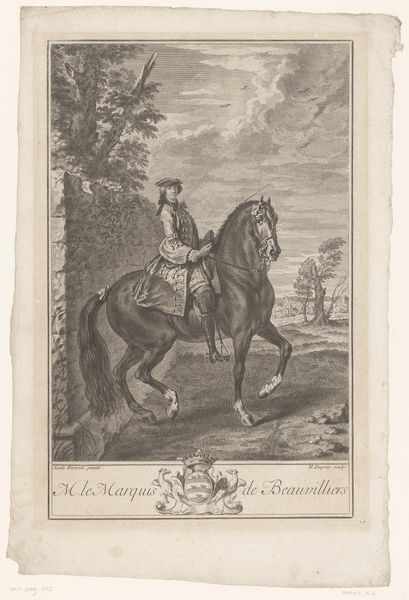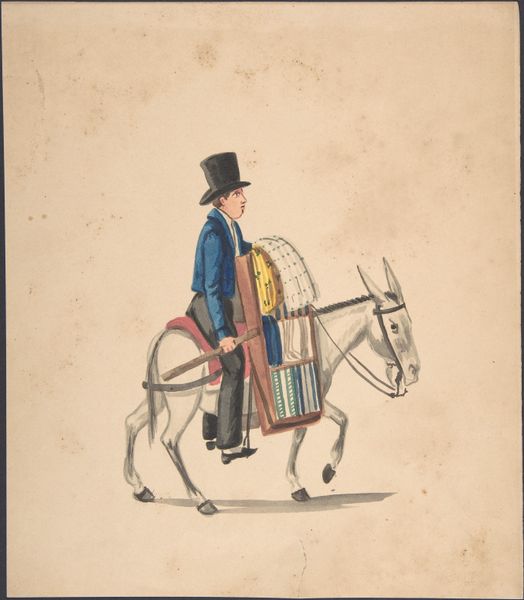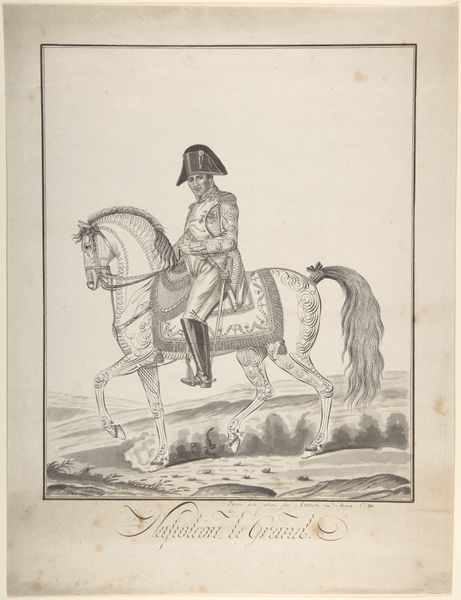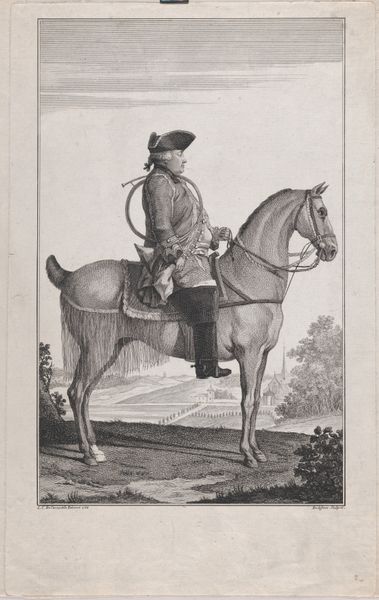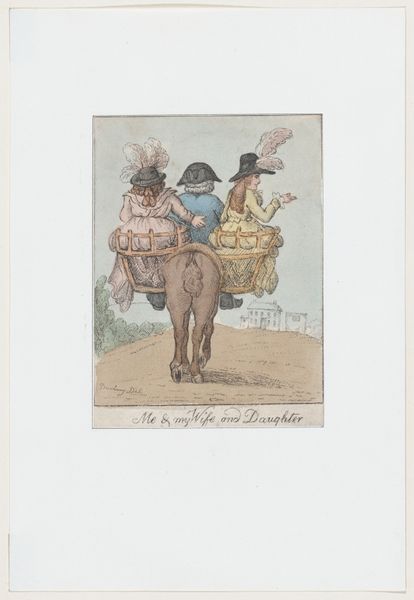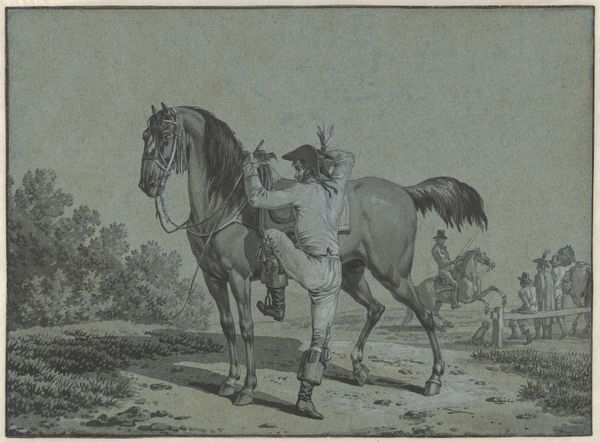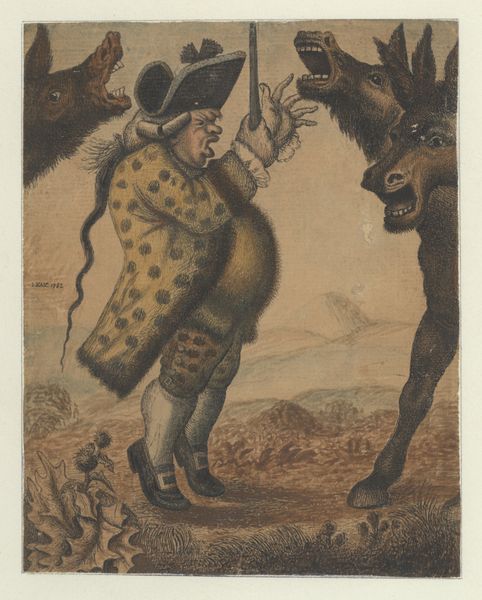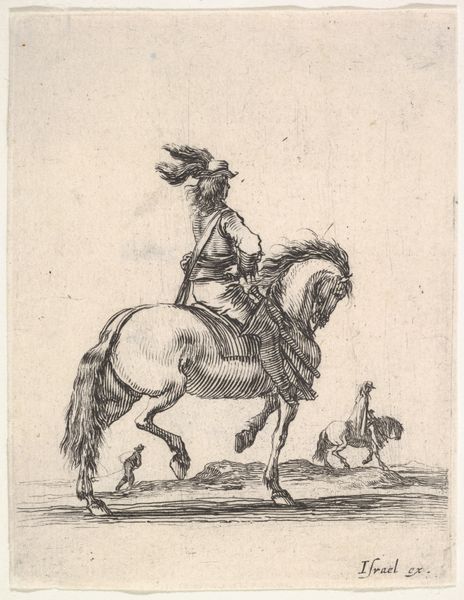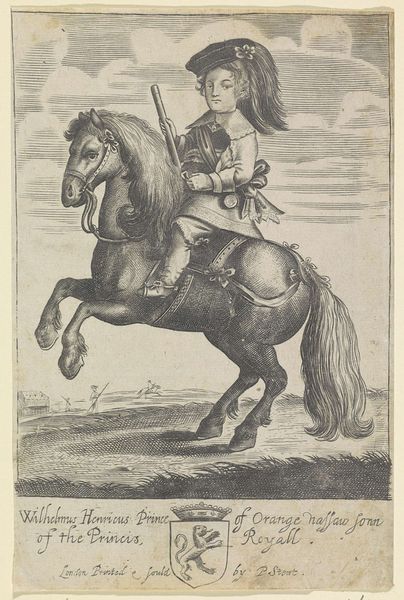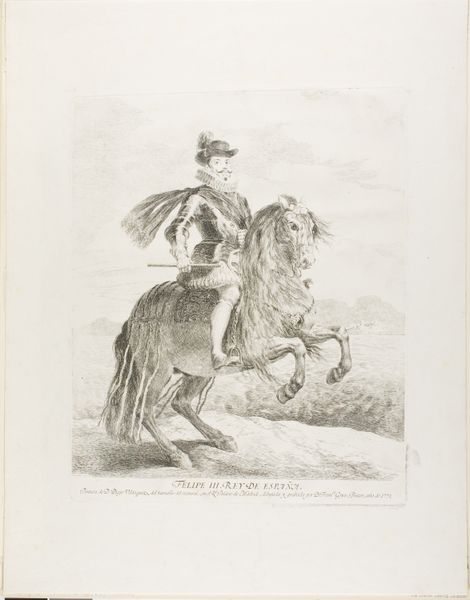
Doctor Syntax Setting Out in Search of A Wife 1 - 1820
0:00
0:00
Dimensions: 8 3/8 x 4 3/8 in. (21.27 x 11.11 cm) (sheet)
Copyright: Public Domain
Thomas Rowlandson made this hand-colored etching, "Doctor Syntax Setting Out in Search of a Wife," in England, sometime around the late 18th or early 19th century. Rowlandson was known for his satirical prints, which often commented on the social mores and follies of his time. Here, we see a clergyman riding rather awkwardly, whip in hand, presumably off to find a spouse. The image uses caricature to poke fun at the institution of marriage and the social expectations placed upon men of the cloth. The humor derives from the tension between the clergyman's supposed piety and the rather mundane, even base, pursuit of a wife. To better understand this image, we might research the social history of marriage in England during this period. What were the expectations for clergymen? How did economic factors influence marriage decisions? Investigating these questions will provide a richer understanding of Rowlandson's critique. Art becomes a window into understanding the nuances of its social context.
Comments
minneapolisinstituteofart almost 2 years ago
⋮
Rowlandson's Doctor Syntax The Tours of Doctor Syntax was an immensely successful series; Rowlandson produced the pictures, which were made into a story by the author William Coombe, who wrote poems to accompany them. Three satirical books were published (1809-21) that follow the hilarious misadventures of a foolish clergyman and schoolmaster, Dr. Syntax, a kind of English Don Quixote. The absurdity of Syntax's character and mishaps incisively mock the customs of the day. Rowlandson devoted most of his time to magazine and book illustration in the second-half of his career, working primarily for the enterprising publisher, Rudolph Ackermann (1764-1834), who printed the Doctor Syntax series. Rowlandson's later activities mark a gradual shift in the caricature genre, when publishers and artists moved away from the production of single, high-quality, expensive prints to the cheaper comical cartoons that were featured in widely distributed magazines. Weeklies like Punch and the Illuminated Magazine were founded in the 1840s and would become a staple of Victorian England. Caricature in this new era served more frequently as illustrated journalism, with cartoons representing an editorial point-of-view, often produced by professional illustrators hired by magazines.
Join the conversation
Join millions of artists and users on Artera today and experience the ultimate creative platform.
